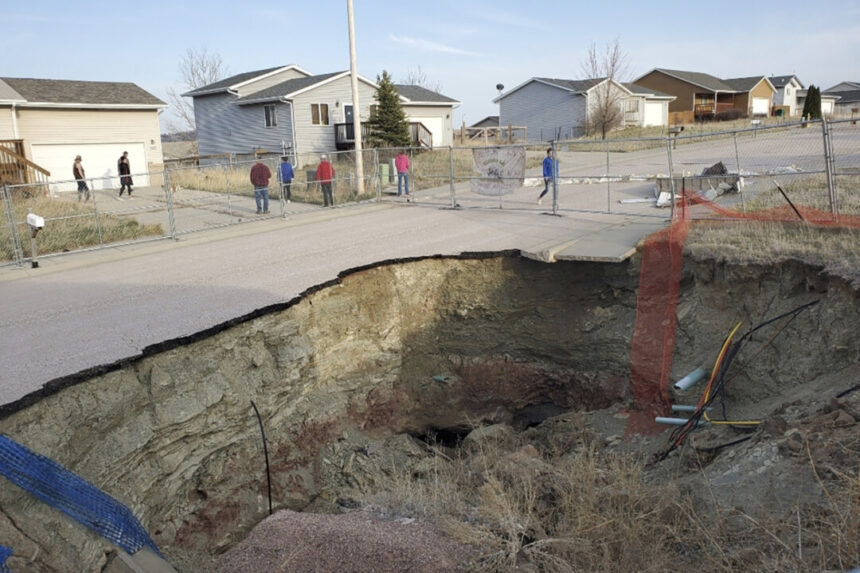Stuart and Tonya Junker were content in their peaceful neighborhood near South Dakota’s Black Hills until the ground began collapsing around them, raising fears that their home could be swallowed by a massive sinkhole.
They hold the state responsible for selling land that eventually became the Hideaway Hills subdivision, despite knowing it was situated above an old mine. As sinkholes started appearing, they joined around 150 neighbors in a $45 million lawsuit against the state to cover the value of their homes and legal expenses.
“It has truly turned our lives upside down,” Tonya Junker shared. “The constant worry, sleepless nights, and the ‘what ifs’ have taken a toll on us.”
Sinkholes are not uncommon due to various reasons like collapsed caves, old mines, or dissolving materials. However, the situation in South Dakota is unique, according to Paul Santi, a geological engineering professor at the Colorado School of Mines. The size and number of sinkholes threatening homes in Hideaway Hills make it a notable case.
The Hideaway Hills development, located northwest of Rapid City, was constructed between 2002 and 2004 on land previously owned by the state where gypsum was mined for a state-owned cement plant.
Kathy Barrow, an attorney representing residents in 94 homes within the subdivision, claimed that the state sold the surface but retained the subsurface rights without disclosing that the natural soil support had been removed.
Initially, some land had sunk slightly, leading to a hole under a porch. However, the situation worsened after a significant sinkhole emerged in 2020 near a man mowing his lawn. Further investigations revealed a large, improperly sealed mine under a portion of the subdivision and a 40-foot-deep pit mine in another area.
Since the first major collapse, numerous sinkholes have formed, impacting 158 homes, roads, and utilities. The unstable ground has created a hazardous environment, with some homes now uninhabitable.
Despite the area near the 2020 collapse being evacuated and cordoned off, many residents cannot afford to leave their homes, leading to a state of panic and helplessness.
“They fear for their safety every day, worrying about sinkholes swallowing their homes or endangering their children,” Barrow explained. “Their most valuable asset, their home, has become a liability and a danger zone.”
The state, through its attorney, has sought to dismiss the case but expressed sympathy for the affected property owners, labeling the sinkhole situation as tragic. They shifted blame onto the developer, realtor, and homebuilders for concealing the mine’s existence from buyers.
According to the state’s court documents, the mining history in the area dates back to the early 1900s, with various companies involved in surface and underground mining. The state argued that it couldn’t be held liable for damages from the mine collapse as the cement plant did not conduct underground mining.
For the Junkers, the lawsuit represents their only hope of escaping the nightmare they find themselves in. Stuart Junker voiced his disappointment in the state’s lack of accountability, emphasizing the need to be fairly compensated for their home.
The Junkers, who have invested years of effort into their home, now face uncertainty and financial strain due to the ongoing crisis.
By Jack Dura
Please rephrase this statement.
Source link






